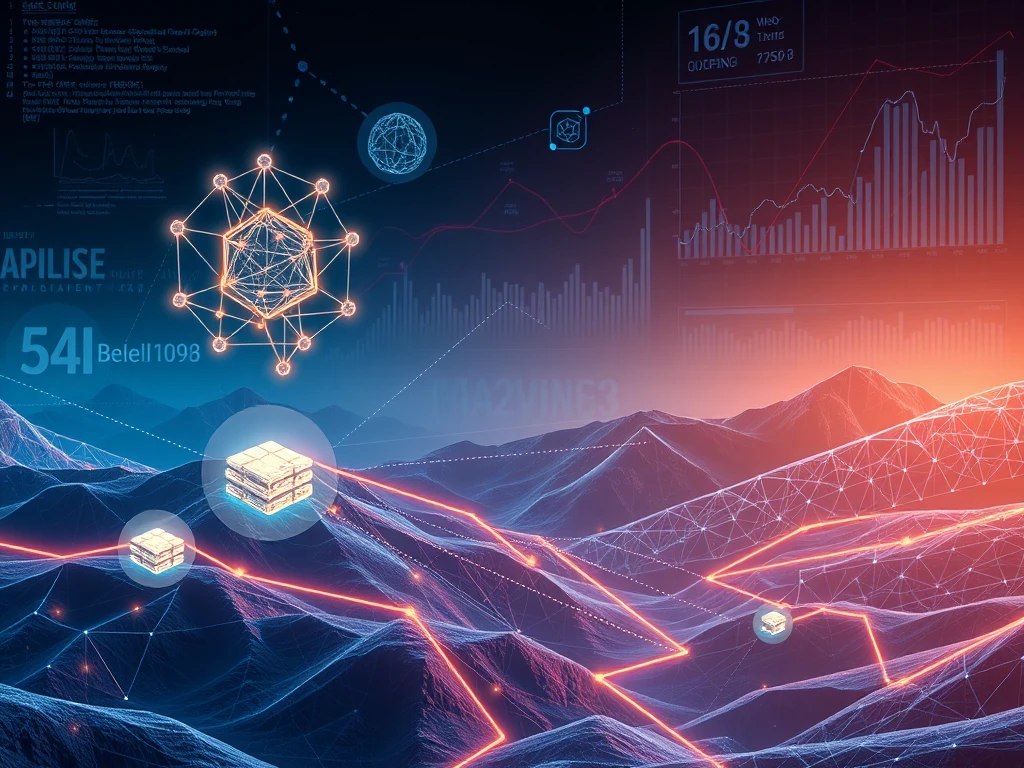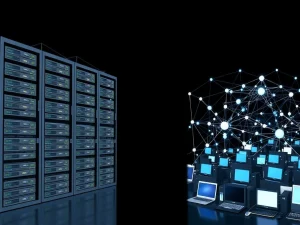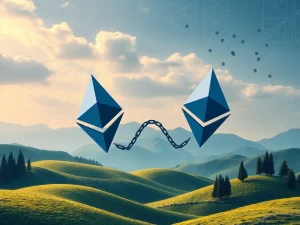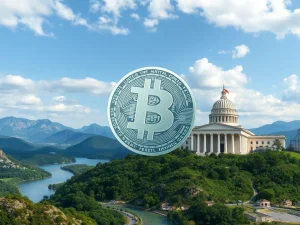AI DApps Surge: Challenging DeFi and Gaming for Web3 Dominance

Hey crypto enthusiasts! Are you keeping an eye on the ever-evolving world of decentralized applications? While DeFi and Gaming have long been the giants, a new player is rapidly rising: AI DApps. A recent DappRadar Report reveals a significant shift in the landscape, indicating that AI-powered applications are no longer just a niche interest but are poised to challenge the established leaders in the Web3 ecosystem.
What the Latest DappRadar Report Reveals
The blockchain analytics platform DappRadar tracks activity across various decentralized applications. Their April industry report highlights a notable increase in user engagement with AI DApps. Here’s a quick look at the numbers:
- In April, Gaming and DeFi each held about 21% of the DApp market share based on unique active wallets.
- AI DApps climbed to 16% dominance in April, a significant jump from 11% recorded just two months prior in February.
- Daily unique active wallets (dUAW) for AI DApps surged over 26%, reaching 3.8 million, up from 2.6 million in February.
- In contrast, DeFi activity saw a 16% drop to 4.8 million dUAW, matching the gaming sector which also experienced a 10% decline.
These figures demonstrate a clear trend: user interest and activity are increasingly flowing towards AI-powered decentralized applications.
Why Are AI DApps Gaining Traction in Web3?
According to DappRadar analyst Sara Gherghelas, the growth of AI DApps is linked to increasing user interest in artificial intelligence tools generally. These decentralized AI projects are finding their place by building practical utility within the Web3 space. It’s not just hype; these applications are offering tangible functions.
Examples of leading AI DApps highlighted in the report include:
- LOL: An AI-powered mining system that rewards users based on voice recordings.
- Dmail Network: A decentralized messaging service leveraging AI.
- World.Fun: A platform for deploying AI agents in simulations.
These examples show the diverse applications emerging, from unique reward systems to essential communication and complex simulations.
The Shifting Landscape: AI DApps vs. DeFi Gaming
For years, DeFi Gaming has dominated the DApp ecosystem, attracting millions of users with financial applications and blockchain-based games. However, the recent data suggests a potential shift in this long-standing dynamic. While DeFi and Gaming still hold the largest individual shares, AI’s rapid growth indicates it could soon challenge their combined dominance.
This competition is healthy for the overall Web3 space, pushing innovation across sectors. As AI capabilities become more integrated into decentralized platforms, we may see entirely new types of DApps emerge that blend elements of finance, gaming, and AI utility.
Challenges and the Broader Web3 Context
While the rise of AI DApps is exciting, challenges remain. Experts have previously pointed out potential headwinds like technical hurdles, regulatory uncertainty, and the inherent tension between decentralization principles and the often centralized nature of powerful AI models. Overcoming these will be crucial for sustained growth.
Looking at the wider picture, the Web3 ecosystem appears resilient. Despite market fluctuations, the overall number of daily active wallets remained stable at around 23 million in April. Social DApps also saw significant growth, increasing activity by 18%. This suggests that utility and compelling narratives, including those around AI and even memecoins, are key drivers of user engagement.
What Does This Mean for the Future?
The rapid ascent of AI DApps is a clear signal of evolving user interests and technological advancements within Web3. While DeFi Gaming remains prominent, the increasing activity in AI applications suggests a future where decentralized AI plays a much larger role. This trend highlights the importance of utility and innovation in attracting and retaining users in the competitive DApp market. Keeping an eye on these developing AI projects will be key to understanding where the decentralized future is heading.










